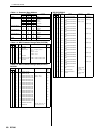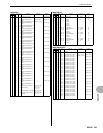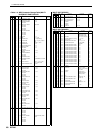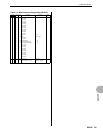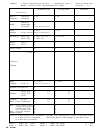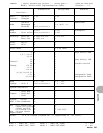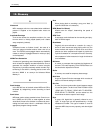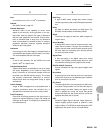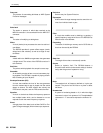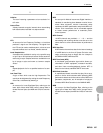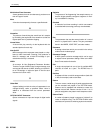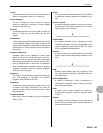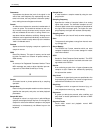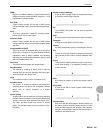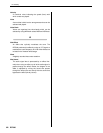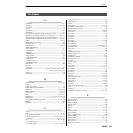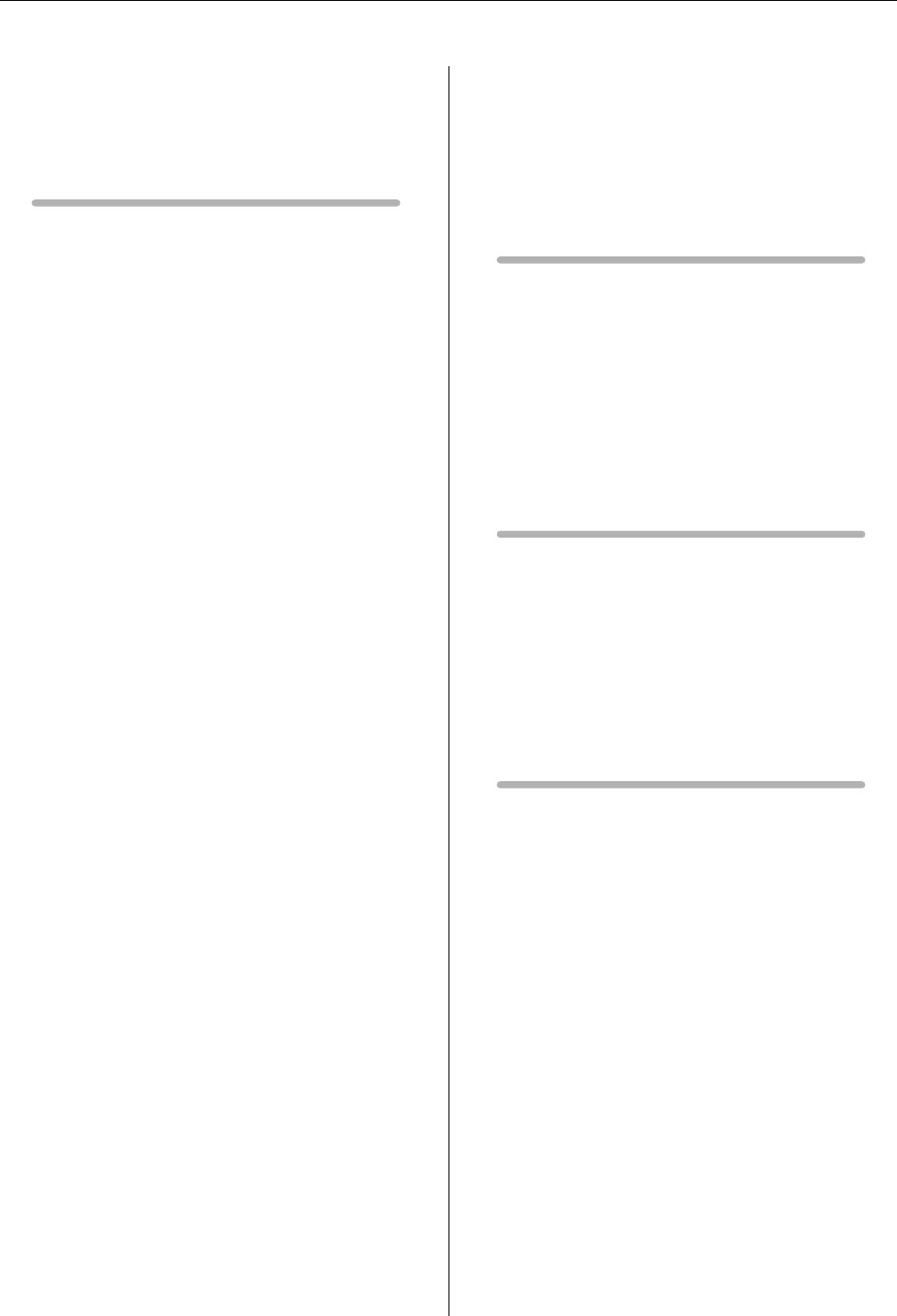
12. Glossary
336 RS7000
Dump out
The process of transmitting bulk data as MIDI System
Exclusive messages.
E
Echo back
The action or process in which data received at the
MIDI IN connector is re-transmitted from the MIDI OUT
connector.
Edit
The action of modifying or editing data.
Effect
A circuit (device) that processes the sound to add vari-
ous effects.
The RS7000 provides 3 system effect stages (reverb,
delay/chorus and variation), as well as a range of mas-
ter effects.
Element
A block within the AWM2 tone generator that generates
a single sound. The voices of the RS7000 consist of 1
to 2 elements.
End Point
The point at which playback of a sample is set to stop.
Ensemble
An ensemble consists of two or more instruments play-
ing together. The RS7000 is capable of playing ensem-
bles consisting of up to 32 parts.
Envelope Generator (EG)
A circuit that modifies the level of the tone generator
from the moment that a note is played until the sound
decays to silence. The AEG controls the volume, the
PEG controls the pitch, and the FEG controls the filter.
Equalizer
A circuit or device that divides the frequency spectrum
into multiple bands which can be boosted or cut as
required to tailor the overall frequency response.
Event
A single piece of the data (such as Note On/Off or Pro-
gram Change messages) which makes up a sequence.
Exclusive
See the entry for System Exclusive.
Expression
A MIDI control change message used to control the vol-
ume of an individual track or part.
F
Filter
A circuit that modifies tone by blocking or passing a
specific frequency range of the sound. The RS7000 has
filters for each voice element.
Formatting
The action of initializing a memory card or SCSI disk so
that it can be used by the RS7000.
G
Gate time
The length of time that a note actually sounds.
Groove
Refers to rhythmic “feel”. The RS7000 features a
Groove function which can be used to subtly (or dramat-
ically) alter the groove of a pattern or song.
H
Hertz
The standard unit of frequency defined as “cycles per
second”. The pitch of the A3 note on a piano is about
440 Hertz.
Hexadecimal
A system of numbering based on 16, in which the digits
increment in units of n-th powers of 16. The alphabetical
characters A ~ F are used to express the numbers 10 ~
15.



